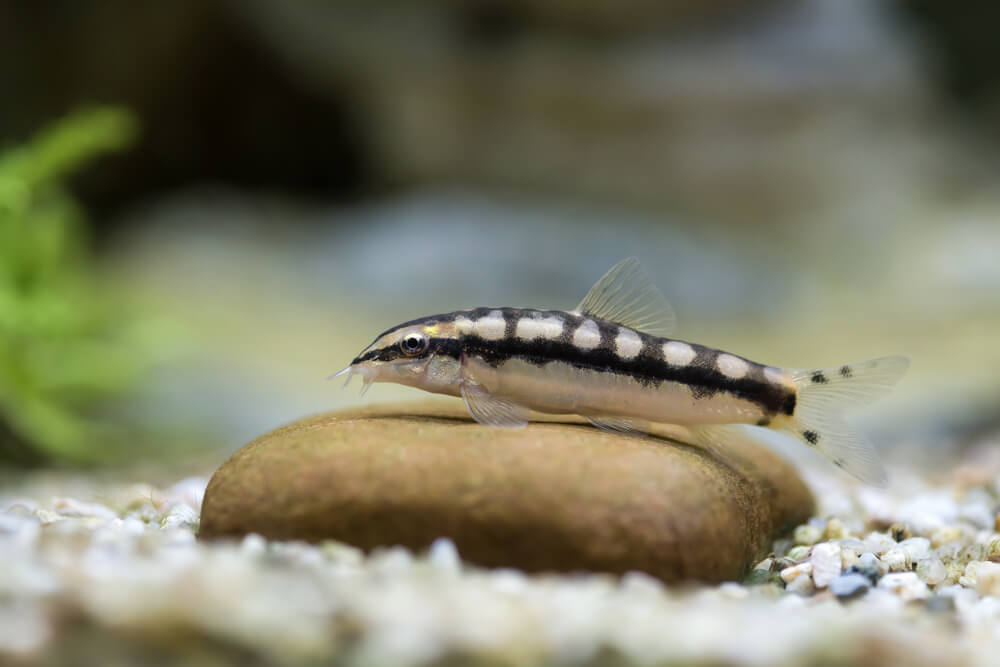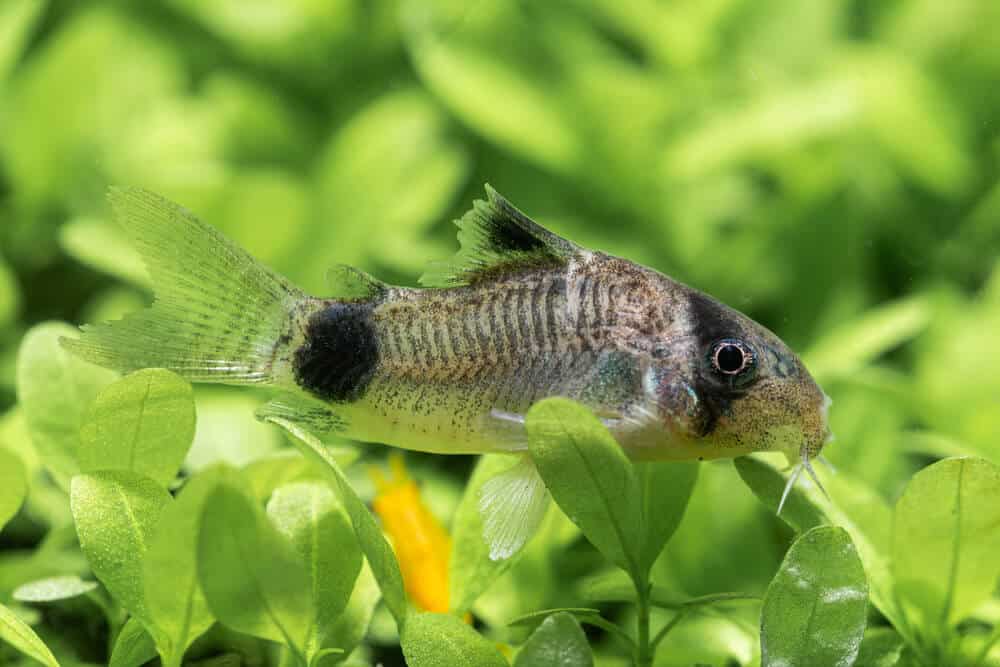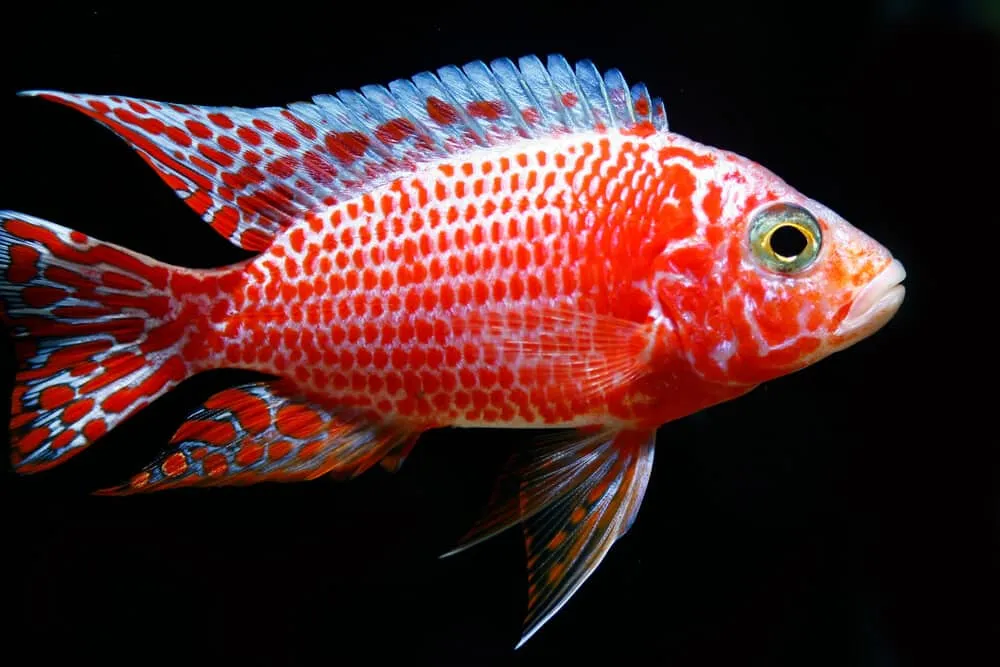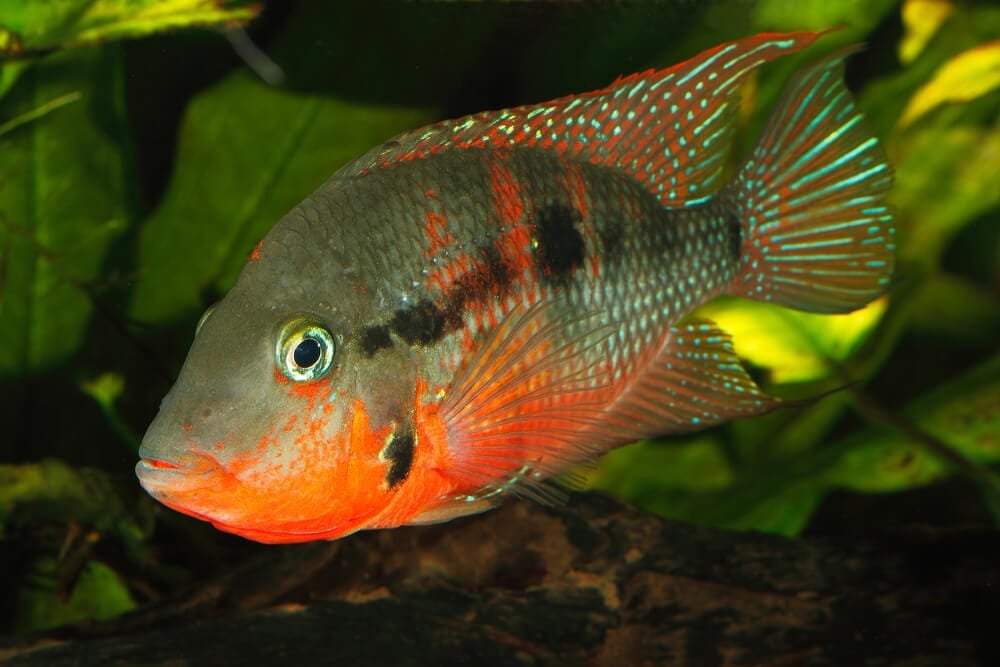Ultimate Dwarf Chain Loach Care Guide

Are you considering adding the captivating and mesmerizing Dwarf Chain Loach to your aquarium but unsure of how to properly care for them? Look no further! This comprehensive guide is the ultimate companion for all your Dwarf Chain Loach care needs. From their ideal tank setup to their unique dietary requirements, this article covers it all. Whether you are a beginner or an experienced aquarist, this guide will provide you with the knowledge and tips to ensure the health and happiness of your Dwarf Chain Loaches. So let’s dive into the world of these fascinating underwater creatures and discover the secrets to their successful care.
Physical Characteristics of Dwarf Chain Loach
Size and shape
The Dwarf Chain Loach, scientifically known as Yunnanilus cruciatus, is a small species of fish that typically grows to a maximum size of 2 inches (5 centimeters). They have an elongated, slender body shape with short, rounded fins. The body is marked with a distinctive chain-like pattern, consisting of dark vertical bars that run horizontally along the body. This unique pattern gives them their name and makes them a visually striking addition to any aquarium.
Coloration
The coloration of Dwarf Chain Loaches can vary depending on their mood and environment. In general, they have a deep, olive-brown color on their dorsal side, which gradually fades to a lighter shade on their ventral side. Their chain-like markings are typically dark brown or black. When the fish is at ease and active, their coloration tends to be more vibrant, while stress or illness can cause their coloration to appear dull and faded.
Finnage
The fins of Dwarf Chain Loaches are relatively short and rounded. The dorsal fin, located on the back of the fish, is positioned closer to the tail than the head. The caudal fin, also known as the tail fin, is fan-shaped and provides the main propulsion for the fish. The pectoral and pelvic fins aid in maneuverability and stability. While not particularly flashy, the fins of Dwarf Chain Loaches are well-adapted to their natural habitat and allow them to move easily through the water.
Tank Requirements for Dwarf Chain Loach
Tank size
Due to their small size, Dwarf Chain Loaches can live comfortably in tanks as small as 10 gallons (37 liters). However, providing them with a larger tank, such as a 20-gallon (75-liter) tank or more, will give them more space to explore and swim around. It’s important to consider the tank size in relation to the number of Dwarf Chain Loaches you plan to keep, as they are social fish that thrive in groups.
Water parameters
Dwarf Chain Loaches are native to rivers and streams in Southeast Asia, so it’s important to recreate their natural water conditions in the aquarium. They prefer slightly acidic to neutral water with a pH range of 6.5 to 7.5. The ideal temperature for Dwarf Chain Loaches is between 75°F and 82°F (24°C to 28°C). It is essential to maintain stable water parameters to ensure the health and well-being of these small fish.
Filtration
Proper filtration is crucial in maintaining a healthy environment for Dwarf Chain Loaches. A reliable aquarium filter, such as a hang-on-back or canister filter, is recommended to keep the water clean and free from harmful substances. The filter should have a moderate flow rate, as these fish prefer calm waters. Adding some bio-media, like ceramic rings or sponge, to the filter can also aid in biological filtration and provide a beneficial environment for beneficial bacteria.
Lighting
Dwarf Chain Loaches do not have specific lighting requirements and can adapt to a variety of lighting conditions. Providing a moderate amount of light, preferably with a timer, will help establish a consistent day-night cycle for the fish. Avoid excessive intensity or duration of light, as it can cause stress or encourage algae growth. It’s worth noting that a darker tank with plenty of hiding spots can make Dwarf Chain Loaches feel more secure and comfortable.
Substrate and decor
When it comes to the substrate, Dwarf Chain Loaches prefer a fine-grained substrate like sand or smooth gravel. This type of substrate allows them to dig and forage without damaging their delicate barbels. To recreate their natural habitat, you can add some river rocks, driftwood, and leaf litter to the tank. These natural decorations not only enhance the aesthetics of the aquarium but also provide hiding spots and mimic the loaches’ natural environment.
Plants
Dwarf Chain Loaches do well in planted aquariums. Live plants provide them with hiding places, breeding sites, and contribute to the overall health of the tank. Opt for robust plants that can withstand their digging and foraging behavior. Species such as Java Fern, Anubias, and Cryptocoryne are good choices. It’s beneficial to have a mix of floating, rooted, and carpeting plants to create a diverse and stimulating environment for the loaches.
Feeding Dwarf Chain Loach
Dietary requirements
Dwarf Chain Loaches are primarily omnivorous, meaning they eat both plant matter and small invertebrates. In the wild, they feed on algae, small crustaceans, and insect larvae. It’s important to provide them with a varied diet in captivity to ensure they receive all the necessary nutrients. High-quality sinking pellets or granules should form the staple diet. Supplement this with frozen or live foods like bloodworms, brine shrimp, daphnia, and small insects to mimic their natural feeding habits.
Feeding schedule
Feed Dwarf Chain Loaches small amounts of food multiple times a day. These fish have a fast metabolism, and feeding them small, frequent meals helps prevent overeating and keeps the water quality in check. Aim to feed them as much as they can consume within a couple of minutes in each feeding session. It’s important to observe their feeding behavior and adjust the amount of food accordingly to avoid waste and maintain optimum health.
Compatibility with Other Fish
Suitable tankmates
Dwarf Chain Loaches are generally peaceful fish that can coexist with a variety of tankmates. They thrive when kept in a community aquarium with other small, non-aggressive fish. Good tankmates for Dwarf Chain Loaches include small rasboras, tetras, danios, and peaceful bottom-dwelling species like Corydoras catfish. It’s important to avoid keeping them with larger or aggressive species that may intimidate or harm the loaches.
Incompatible species
While Dwarf Chain Loaches are usually peaceful, there are some species that may not be compatible with them. Avoid keeping them with aggressive or territorial fish, as they may not tolerate the loaches’ presence. Additionally, large or fast-swimming fish can also stress them out. Some examples of incompatible species include cichlids, larger barbs, and aggressive loach species. Always research and carefully choose tankmates that will coexist harmoniously with Dwarf Chain Loaches.
Tank Maintenance for Dwarf Chain Loach
Water changes
Regular water changes are essential for maintaining the health and well-being of Dwarf Chain Loaches. Aim to perform a 25% to 50% water change every week to keep the water clean and maintain stable water parameters. Make sure to treat the new water with a suitable water conditioner to remove chlorine, chloramine, and heavy metals before adding it to the tank. Proper water changes help remove accumulated waste, maintain water quality, and prevent the buildup of harmful substances.
Cleaning
Cleaning the aquarium involves removing any uneaten food, excess debris, and waste that may accumulate on the substrate and decor. Use a siphon or aquarium vacuum to gently vacuum the substrate during water changes, being careful not to disturb the loaches or uproot plants. Regularly clean the filter by rinsing the mechanical media in old tank water to remove buildup. Avoid using tap water or cleaning agents that may harm the beneficial bacteria in the filter.
Testing water parameters
Regularly testing the water parameters is crucial for monitoring the overall health and stability of the aquarium. Use a reliable water testing kit to check the levels of ammonia, nitrite, nitrate, pH, and other important parameters. Aim to test the water at least once a week, or more frequently if you notice any changes in the behavior or appearance of your loaches. Maintaining stable water conditions helps prevent stress and reduces the risk of diseases.
Behavior of Dwarf Chain Loach
Schooling behavior
Dwarf Chain Loaches are social fish that prefer to be kept in groups of five or more individuals. They exhibit schooling behavior, forming close-knit groups and swimming together in an organized manner. Keeping them in larger groups not only mimics their natural behavior but also promotes a sense of security and overall well-being. In smaller groups or when kept alone, Dwarf Chain Loaches may become stressed, less active, and more prone to health issues.
Activity level
Dwarf Chain Loaches are active fish that constantly explore their surroundings. They spend a significant amount of time foraging along the bottom of the tank, sifting through the substrate in search of food and small invertebrates. These loaches appreciate a well-decorated tank with plenty of hiding spots and areas to explore. Watching their busy and lively behavior can be quite entertaining and adds a dynamic element to the aquarium.
Hunting and foraging
In their natural habitat, Dwarf Chain Loaches are opportunistic hunters that feed on small invertebrates and insect larvae. They have a specialized mouth structure that allows them to probe into crevices and sift through the substrate in search of food. In the aquarium, they will readily accept a variety of commercial foods, but it’s beneficial to provide occasional live or frozen foods to satisfy their natural foraging instincts.
Interaction with tankmates
Dwarf Chain Loaches are generally peaceful and get along well with a variety of tankmates. They are not known to be aggressive or territorial, making them great additions to community aquariums. They tend to be more active and confident when kept with other loaches or fish of the same species. However, they may become shy or reclusive if harassed by larger or more aggressive tankmates. Always monitor their interactions and intervene if any aggression or stress is observed.
Breeding Dwarf Chain Loach
Sexing
Distinguishing between male and female Dwarf Chain Loaches can be challenging, especially outside of the breeding season. However, during the spawning period, the females tend to have a rounder and fuller body compared to the slimmer males. Additionally, mature females may develop a slightly deeper belly, indicating the presence of eggs. The differences between the sexes become more apparent when observing their behavior and interactions during breeding.
Breeding conditions
Breeding Dwarf Chain Loaches in captivity requires providing them with specific conditions that mimic their natural environment. Create a separate breeding tank with suitable water parameters, including slightly acidic to neutral pH and a temperature range between 77°F and 82°F (25°C to 28°C). Additionally, provide fine-leafed plants like Java Moss or spawning mops as potential spawning sites to encourage breeding behavior and increase the chances of successful spawning.
Spawning process
Dwarf Chain Loaches are egg-scattering breeders, meaning the female will release the eggs into the water, and the male will fertilize them externally. The spawning process is usually initiated through courtship displays, where the males chase and nudge the females. Once the female releases the eggs, the male fertilizes them, and the adhesive eggs will attach to nearby surfaces or sink into the substrate. The parents do not provide any further care for the eggs or fry.
Raising fry
Separating the eggs or fry from the adults is recommended to prevent predation. The eggs typically hatch within 24 to 48 hours, and the fry become free-swimming shortly after. At this stage, the fry can be fed infusoria, freshly hatched brine shrimp, or commercially available liquid fry food. Make sure to provide adequate hiding spots and fine-grained substrate for the fry to seek shelter and forage. Regular water changes and careful monitoring are crucial to ensure the health and survival of the fry.
Common Diseases and Health Issues
Ich (White Spot Disease)
Ich is a common parasitic disease that affects many freshwater fish, including Dwarf Chain Loaches. Infected fish may exhibit symptoms like white spots, scratching against objects, and loss of appetite. Treating Ich involves raising the water temperature to speeds up the parasite life cycle in combination with the use of a suitable medication. Additionally, maintaining optimal water quality and reducing stress helps prevent and treat Ich outbreaks.
Fungal infections
Fungal infections can occur as a result of poor water quality or physical injuries. Infected fish may develop cotton-like growths or patches on their bodies. Treating fungal infections involves maintaining optimal water parameters, performing regular water changes, and administering antifungal medications. It’s also important to address the underlying cause of the infection, such as improving water quality or removing aggressive tankmates.
Parasites
Dwarf Chain Loaches can be susceptible to various parasites, such as flukes, worms, and protozoans. These parasites can cause symptoms like rapid breathing, weight loss, and abnormal behavior. Treating parasitic infections requires the use of appropriate medications, such as anti-parasitic medications or salt baths. Quarantining new fish before introducing them to the main tank can help prevent the introduction of parasites.
Stress-related ailments
Stress can weaken the immune system of Dwarf Chain Loaches, making them more susceptible to various diseases and health issues. Factors that can cause stress include poor water quality, incompatible tankmates, inappropriate tank conditions, and sudden changes in environment or water parameters. To minimize stress, maintain stable water conditions, provide suitable hiding spots, and ensure a peaceful and well-suited tank environment for the loaches.
Tips and Tricks for Dwarf Chain Loach Care
Provide hiding spots
Dwarf Chain Loaches appreciate a well-decorated tank with plenty of hiding spots. Use rocks, driftwood, and plants to provide hiding places for them to retreat to when they feel stressed or threatened. This helps them feel secure and reduces the risk of stress-related ailments. Offering plenty of hiding spots also mimics their natural habitat, creating a more stimulating and enriching environment for your loaches.
Offer a varied diet
To ensure a balanced diet, it’s important to offer a variety of foods to your Dwarf Chain Loaches. Along with high-quality sinking pellets or granules, supplement their diet with frozen or live foods like bloodworms, brine shrimp, and daphnia. This mimics their natural foraging behavior and ensures they receive all the necessary nutrients. A varied diet also helps enhance their coloration and overall health.
Maintain water quality
Maintaining optimal water quality is crucial for the health and well-being of Dwarf Chain Loaches. Regularly test the water parameters, perform water changes, and keep the tank clean to prevent the buildup of harmful substances. Avoid overstocking the tank, as this can lead to poor water quality and increased stress for the loaches. A well-maintained tank provides a healthy environment for your loaches to thrive.
Monitor tank parameters
Monitoring the tank parameters regularly helps you catch any issues early on and take appropriate action. Keep an eye on the temperature, pH, ammonia, nitrite, and nitrate levels to ensure they stay within the appropriate range. Any sudden changes or fluctuations in these parameters can be a sign of an underlying issue that needs to be addressed promptly.
Observe behavior regularly
Spend time observing the behavior of your Dwarf Chain Loaches regularly. Healthy fish should be active, feeding well, and interacting with their tankmates. Any sudden changes in behavior, such as lethargy, loss of appetite, or excessive hiding, could indicate an issue that needs attention. Promptly addressing changes in behavior can help prevent and treat potential problems before they become more serious.
Conclusion
With their unique chain-like markings and lively behavior, Dwarf Chain Loaches make a fascinating addition to any aquarium. By providing them with suitable tank conditions, a varied diet, and proper care, you can ensure their health and well-being. Remember to recreate their natural habitat, maintain stable water parameters, and monitor their behavior regularly. With patience and attention to detail, you can create a thriving environment for Dwarf Chain Loaches and enjoy their beauty for years to come.






